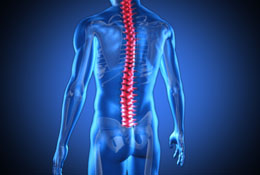An alternative to the expensive surgeries and other lower back pain treatment options, non-surgical spinal decompression is a revolutionary new technique to cure conditions like herniated and bulging discs, sciatica, and stenosis.

Chronic lower back pain is one of the most common health problems affecting people round the world. With the rising costs of surgery, people are increasingly opting for the safer and cost-effective method of non-surgical spinal decompression. This chiropractic procedure of spinal decompression is used to relieve pressure on one or more spinal nerves and is used for the treatment of conditions such as sciatica, stenosis, herniated discs, degenerated discs, and osteo-arthritis. However, this revolutionary new technology is primarily used to treat disc injuries in the neck and the back. Here is a look at the procedures of these techniques along with the obvious appeals that it holds over the surgical methods.
An Overview of The Method
This treatment option is very safe and utilizes FDA-cleared equipment to apply distraction forces to the spinal column. This is done in a precise and graduated manner, where the series of distraction is offset by cycles of partial relaxation. This technique of spinal decompression which involves unloading due to distraction and positioning, has shown the ability to gently separate the vertebrae from each other. This creates a vacuum inside the discs that we are targeting, causing the so-called "vacuum effect". This technique is also known as negative intra-discal pressure and induces the retraction of the herniated or bulging disc into the inside of the disc and off the nerve root, thecal sac, or both. Although the initial results may not be significant, over the period of 4-6 weeks the results are observed. These cycles also promote the diffusion of water, oxygen, and nutrient-rich fluids from outside to inside, enabling the torn and degenerated disc fibers to heal.
Detailed Information About The Process
During the process of receiving the treatment, an individual is firmly yet gently secured to a decompression table using straps and padded blocks. Once the patient is securely in place, the table moves, applying traction pressure to the affected parts of the back and neck. This movement slowly creates a negative pressure in the center of the intervertebral disc, thereby, creating a suctioning effect or vacuum phenomenon. This helps in relieving the pressure and tension that causes lower back pain. In case, the patient experiences any discomfort, there is a safety switch available to the patient, allowing him to immediately stop the treatment. Many people receiving the treatment have reported almost immediate back pain relief.
Appeal for This Treatment
Non-surgical spinal decompression is a safer and cheaper treatment for people with herniated or bulging discs, spinal stenosis, sciatica, facet syndrome, spondylosis, or even failed spinal surgery. It also has its advantages over lumbar traction. While the method of traction is basically used for stretching of the spine, decompression creates a vacuum effect in it. This causes the spine to be stretched, thus, slightly opening up the nerve holes while also ensuring that the discs are suctioned back in place. With repetitive treatments, the disc is then able to stay in place keeping the spinal canal and nerve canals free of interference. Also, traction just provides a short-term relief and usually causes the muscles to spasm when the spine is pulled in a linear fashion. In contrast to this, the decompression technique uses a cyclical, alternating fashion of pulling and relaxing the spinal cord.
It is advisable that before going in for any such treatments, you consult a doctor. This is because these compression techniques are not suitable for everyone. Before going in for this non-surgical spinal decompression, proper patient screening has to be done to determine whether you are suitable for this treatment option.
Disclaimer: This article is for informative purposes only, and should not be treated as a substitute for professional medical advice.


 Chronic lower back pain is one of the most common health problems affecting people round the world. With the rising costs of surgery, people are increasingly opting for the safer and cost-effective method of non-surgical spinal decompression. This chiropractic procedure of spinal decompression is used to relieve pressure on one or more spinal nerves and is used for the treatment of conditions such as sciatica, stenosis, herniated discs, degenerated discs, and osteo-arthritis. However, this revolutionary new technology is primarily used to treat disc injuries in the neck and the back. Here is a look at the procedures of these techniques along with the obvious appeals that it holds over the surgical methods.
Chronic lower back pain is one of the most common health problems affecting people round the world. With the rising costs of surgery, people are increasingly opting for the safer and cost-effective method of non-surgical spinal decompression. This chiropractic procedure of spinal decompression is used to relieve pressure on one or more spinal nerves and is used for the treatment of conditions such as sciatica, stenosis, herniated discs, degenerated discs, and osteo-arthritis. However, this revolutionary new technology is primarily used to treat disc injuries in the neck and the back. Here is a look at the procedures of these techniques along with the obvious appeals that it holds over the surgical methods.